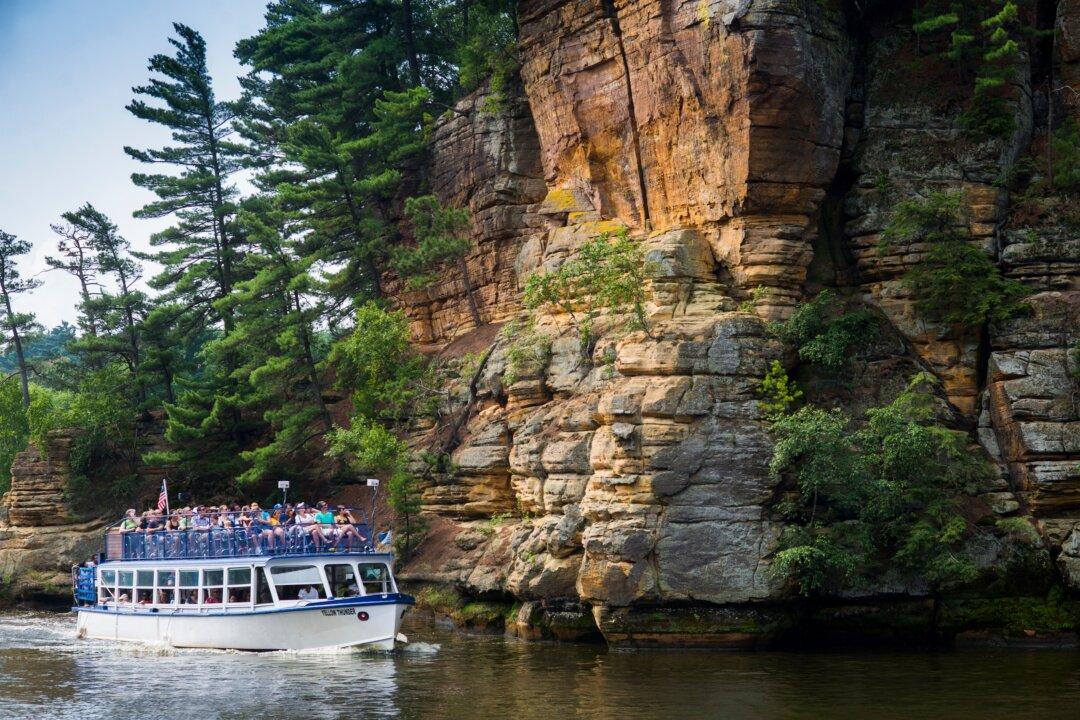Henry Hamilton Bennett, a carpenter, lost use of his hand while serving in the Civil War, and thus, a dramatic Ice Age river gorge became the Waterpark Capital of the World. True story, if incomplete.
Wisconsin Dells is both a natural attraction and a tourist city on the Wisconsin River, attracting millions each year for the beauty of the waters flowing through sandstone and forest, and the thrills of an abundance of competing indoor and outdoor waterparks.





